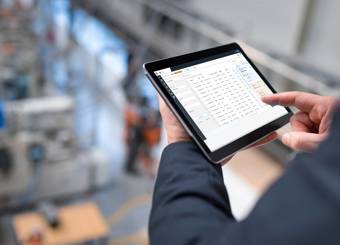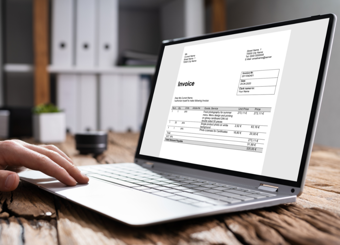Journal entries for accounts payable
Understanding journal entries for accounts payable is crucial to accurately record business transactions. Unfortunately, manual maintenance of the accounts payable balance sheet is time-consuming, tedious, and subject to human error.
An automated accounts payable system streamlines the journal entry process, providing critical financial data in real-time to support the C-suite’s decisions. Effective integration begins with learning more about journal entries for accounts payable and how automation processes them with the most significant speed and accuracy.
Understanding journal entries
While there are five basic types of journal entries for accounts payable, there are thousands of possibilities where automation becomes an advantage for efficient processing. In addition, old-fashioned spreadsheets and ledger books meant endless hours of painstaking work with plenty of room for error. Types of journal entries include:
- Liability entries
- Revenue and AR
- Expense journal entries for accounts payable
- Asset journal entries
- Equity journal entries
A company’s financial position is defined by understanding journal entries for accounts payable. An automated accounts payable system removes detail-oriented and time-hogging manual entry, ensuring the highest level of accuracy and reducing fraud.
What are journal entries for accounts payable?
Journal entries for accounts payable are the amount payable accounting entries to creditors of the organization for purchasing goods or services. The journal entries are reports under the head current liabilities on a balance sheet, debited after making payments. Additionally, buying goods or services on account is an AP liability.
With that in mind, journal entries are based on the seller’s invoice that outlines the amount due and when payment is due. In the past, processing invoices was a paper chase involving tedious hours of matching, checking, verifying, updating, and reporting. Lengthy manual processes were subject to inevitable frustration and human error when tackling an accounts payable balance sheet. Cloud automation helps organizations achieve paperless and touchless AP processes, requiring minimal human intervention, for the highest level of speed, accuracy, and convenience when making journal entries for accounts payable.
What are typical accounts payable journal entries?
As AP transactions move forward, journal entries are updated to reflect their progress and keep track of current financials. While there are countless variations when it comes to basic AP transactions, journal entries are based on five typical accounting scenarios, as mentioned above and detailed below:
- Purchase of merchandise inventory on account, a liability made under the periodic inventory system, unless the company uses the perpetual inventory system.
- Damaged or unwanted inventory returned to the supplier could mean a return or reductional allowance to reduce the AP liability.
- Purchase of an asset other than merchandise inventory on account, an AP liability for buying assets other than fixed assets.
- Expenses incurred on account or services purchased on account as a future liability based on the date agreed upon by the parties.
- Payment made to the creditor or to payable, involving the creation and recording in the liability, and then a reduction of same.
With all of these moving parts involved in AP journal entries, errors and inaccuracies are inevitable with manual processing. A cloud automated accounts payable system automatically updates journal entries in real-time, allowing remote access to the latest financial information to increase efficiency, reduce fraud, ensure timely payments, eliminate late payment fees, renegotiate terms, and negotiate discounts for early payments.
Understanding journal entries for accounts payable is the first step toward gaining control of an organization’s financial bottom line. Fortunately, the days of manual accounting on an accounts payable balance sheet are over. Ledger books and spreadsheets are tedious tasks of the past with an automated accounts payable system. Discover how automation saves time, money, and resources, while helping your organization stay ahead of the curve - and competition.






